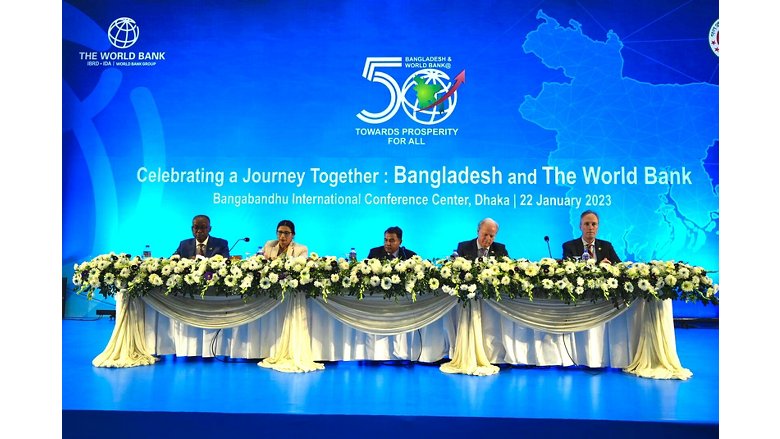Partnering Success
Bangladesh has made enormous strides in the past 50 years – from one of the poorest nations at birth, it is now one of the fastest-growing economies. GDP per capita has increased from $134 in 1971 to $2,503 in 2021. Extreme poverty has been cut by more than half from 34 percent in 2000 to 13 percent in 2016.
Furthermore, people are living longer and healthier lives with maternal mortality cases down from 434 per 100,000 live births in 2000 to just 173 in 2017. Almost all children go to school; in fact, Bangladesh’s net enrollment rate at the primary school level reached above 97 percent. The country’s flagship female stipends program realized the goal of girls making up more than half of secondary school enrollments.
As a result, more and more women are entering the workforce and contributing to the growth of the economy. The growth of the readymade garments industry led to female labor force participation rates going up from 21 percent in 1990 to 35 percent in 2021. Now, every home has electricity and around 8.2 million people in remote, rural areas in Bangladesh has access to clean energy.
Bangladesh has also imparted new lessons to the world to cope with challenges arising from climate change. Through multipurpose shelters that also operate as primary schools, embankments and early warning systems, cyclone-related fatalities have decreased by 100-fold since independence.
In the last 50 years, the World Bank has been a steadfast partner.
As one of Bangladesh’s first development partners, the World Bank began this partnership with a $50 million credit in 1972 and in the ensuing years, committed more than $38 billion in financing to help Bangladesh overcome barriers to growth and development. Today, Bangladesh has the largest ongoing program of the International Development Association (IDA) and the World Bank is the country’s largest external funder.


